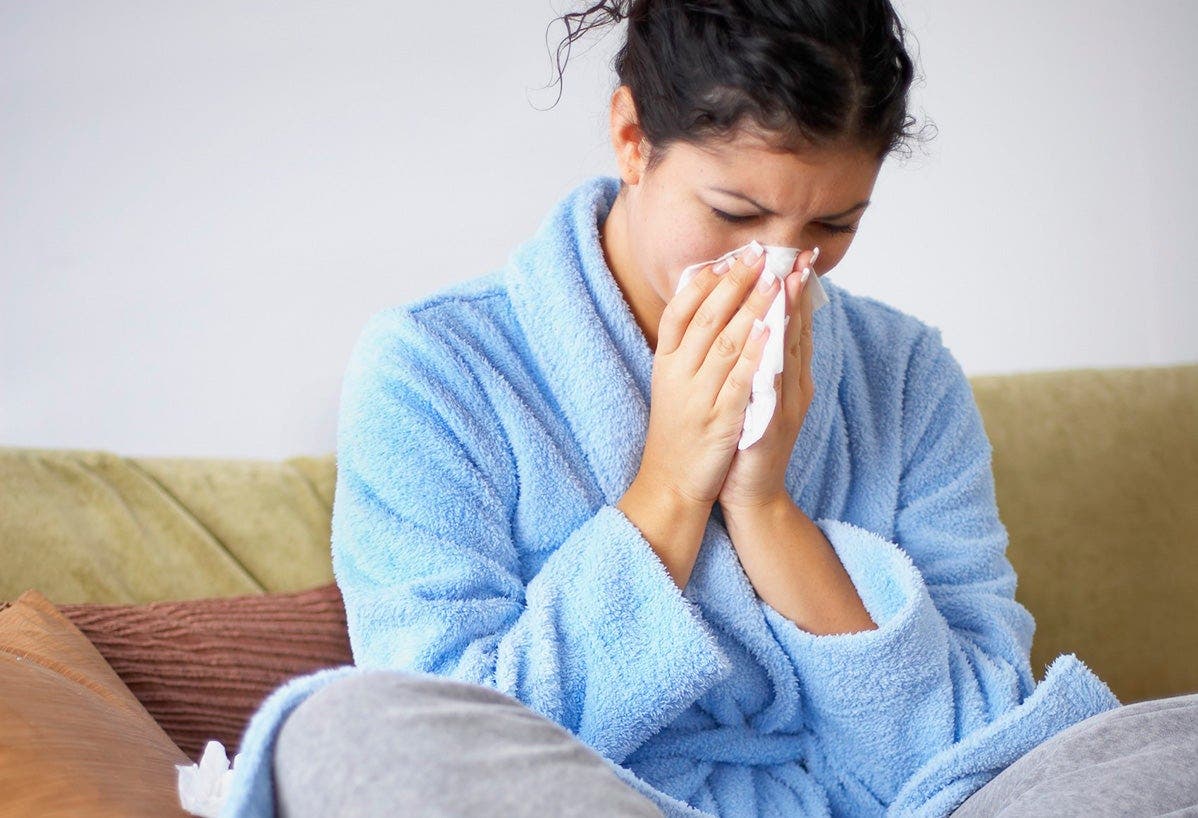Too Sick to Sweat?


It happens. You’re going strong with your exercise program, and then, one day, your energy wanes. It’s a sniffle, or perhaps something more. Often it can be difficult to figure out if you should plow ahead or take some time off and rest.
The acid test, say experts, is to first listen to your body. Kathy Kaehler, a celebrity fitness trainer based in California and author of Fit and Sexy for Life, says “You’re the only one who knows how tired you might be, or if a cold or flu is coming on.” Read on for tips from top experts about when it’s safe to workout, and when to throw in the towel.
Red light: Go home and rest
When you have a temperature of 99.5º or higher. Working out when you have a fever can cause your body temperature to rise even higher, potentially leading to heatstroke. Pamela Peeke, MD, author of the bestseller Body for Life for Women, and assistant professor of medicine at the University of Maryland, advises you to stay home. “When you sleep, your immune system repairs itself,” she explains.
RELATED: Health Benefits of Sleep
When you have gastrointestinal symptoms such as nausea, vomiting or diarrhea. These symptoms can lead to dehydration. When body fluids are reduced, you can be more prone to muscle cramps and spasms. Best to avoid exercise until your symptoms have completely disappeared, since rehydrating the body can take several days.
RELATED: Health Benefits of Drinking Water
When your cold symptoms include chest congestion or tightness, or a hacking cough with mucus. Noah Gentner, PhD, assistant professor of exercise and sport sciences at Ithaca College, says that as a rule, you should avoid exercise any time you are suffering from "below the neck" symptoms. Your breathing and lung capacity may be diminished, or you may have an infection in your airways, so it's best to steer clear of the gym.
Yellow light: Proceed with caution
When you have a headache. Kaehler says sometimes exercise can make a headache disappear. "You have to try to determine where it's coming from," she says. Perhaps you missed your normal caffeine fix, or are under more stress than usual. But if you do head for the gym, be cautious, warns Dr. Jack Barnathan, president of New York Strength Peak Performance Consulting: "If your headache is causing you to be lightheaded then be careful. You might not want to be in a place with heavy weights and machines requiring coordination."
When you have a sore throat. A sore throat may be just that, but it could be the sign of a bacterial strep infection. And since vigorous activity has been shown to reduce immunity, there's a chance that the infection could spread further down the respiratory tract. Take it easy and exercise moderately.
When you are tired. Determine if your fatigue is due to mental or physical reasons. Why? Because if you're mentally tired, exercise may be just what you need to invigorate you. "If you're not beyond exhausted, you can exercise, but alter your expectations," suggests Peeke. Sometimes, simply showing up and exercising at a lower level will help. Just be sure to remain alert and pay attention so you avoid unnecessary injuries.
Green light: Continue with a moderate workout
When you have a cold but no fever; with symptoms "above the neck" (runny or stuffy nose, sneezing or sore throat without a persistent or hacking cough). Research shows that you can put as much effort into a workout when you have a cold as when you are healthy, and that moderate exercise during a rhinovirus-caused cold does not appear to affect symptom severity or duration. Consider exercise as medicine: Moderate exercise during the sniffles may actually help you feel better by temporarily relieving nasal congestion. Remember to still gage how you feel as symptoms can vary on an individual basis; talk to your doctor if you’re unsure.
Try this: 3 Ways to Walk
